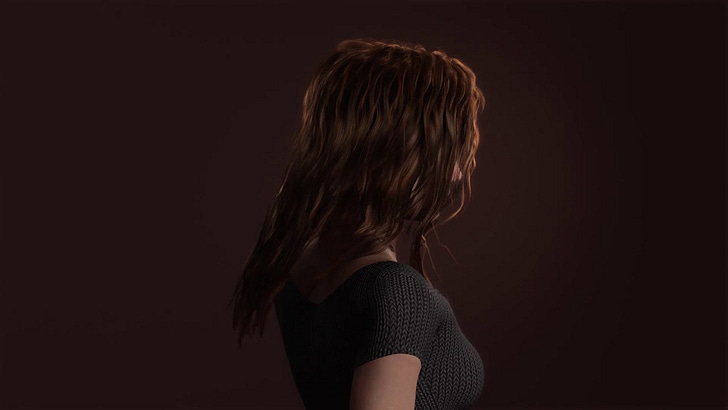Character creators are generating extremely realistic humanoid 3D characters that can be used in any animation film you want for whatever purpose.
Animation is part of micro-interactions deployed on a website or webpage to improve user experience (UX). In a nutshell, micro-interactions are the many tiny ways by which the end-user experience is enhanced. The Facebook “Like” button, for example, is a micro-interaction.
One of the ways of intensifying user experience is by using animation.
I am no qualified animator, and I write this newsletter from the perspective of a content strategist alone. But a brief chat with a 3D animator early last week set me off on a journey to understand where the world of animation as a content and marketing tool stands today. I was rather taken aback, not to mention deeply enthralled, by the progress animation has made as a technology and as a content form in the marketing and advertising worlds.
Web designers and digital marketers already know that animation can improve UX, and thus up the level of interaction with traffic/leads/prospects. There are many pieces of content you can apply/add animation to:
Your logo
Your video
Your email content
Your social media post
Why does animation work? Because it instantly tugs at your heartstrings. Research has shown that visuals rather than plain, cold text appeal to humans. Visuals always trump text, a fact known to advertisers and marketers.
More specifically, animation per se has two things going for it vis-à-vis video. It’s cost-effective, and with the advent of DIY technology, far easier to produce. Also, compared to a video, it catches viewer sentiment faster, and even holds it for much longer. Basically, animated films get you hooked.
Now, if I’ve painted this rather rudimentary image in your mind’s eye about two cartoonish characters playing out a “cute” 15 seconds sequence on a whiteboard background, nothing could be further from the truth.
While you were busy with other content related matters, the world of animation has transmuted into this fantastically awesome realm of human avatars and “CG humans”. It’s no longer the purview of a chosen few, animation as a form of content has gone mainstream.
It was this article written by Geoffrey James, Contributing Editor, Inc.com that took me first into the world of real-time animation. Geoffrey, of course, has written about how high-quality, real-time animation was poised to disrupt the Hollywood studio system and other segments of the video media industry, thereby creating a new billion-dollar industry segment.
But it was his piece that made me delve deeper into the world of animation content, facial recognition software, performance capture tools, virtual warts, et al.
What is real-time animation?
There used to be a time when animation was flat or 2D. Advances in computing, however, made 3D modeling possible, right on your desktop. Suddenly, your animated object could have height, width and depth.
Like Geoffrey, too, has written, 3D breathe life into computer games, making them come alive. But over the years, computing power got muscle, steel and strength; and became blazingly fast. An animator no longer required huge data centers and mini armies of creators to deliver the goods; everything converged on the humble PC, ushering in the era of real-time animation.
So let’s first understand what real-time animation is. A simple explanation is the use of a motion capture system to make a digital puppet out of a human being. You must be familiar with images of sensors attached to a human face or body that transfer data to a computer where a digital avatar complete with “robotic” movement is developed. That’s what real-time animation, also known as live animation, is all about.
An early example of real-time animation would be the multi-million grosser film, “Avatar”.
Unlike the early days when traditional computer animation took hours to “render”, today, massive computing processing speeds does this job almost live. You have animation suites like Reallusion's iClone family, Houdini or Cinema 4D that make it fairly easy (and cheap) to develop and deliver 3D models and motion graphics right from your Windows or Mac desktops. These are able to produce draft-quality finished animated video as quickly as you can display it on a screen.
I decided to take one of them - iClone - on a preliminary test drive. To say I was stunned by the experience would be an understatement. Again, to repeat, I am not an animation expert. This could be old news for those in the animation business but to other content developers and marketers, real-time animation should come as an eye-opener, and a form that must be exploited for marketing and advertising purposes. Because it’s there, because it’s easy, because it’s cheap.
Basically, iClone offers off the shelf, real-time 3D animation and rendering software. Like some of its competitors, it enables users to make 3D animated films. Real-time playback is enabled by using a 3D video game engine for instant on-screen rendering.
What got me was that iClone even gives users royalty-free usage of all content it creates with the accompanying software package users choose. Suites like these, I found, are not only extremely user-friendly (even for a first timer like me), but also help blend character animation, scene design and cinematic storytelling.
Such software offers face and body animation, and even character creator (CC) which generates extremely realistic humanoid 3D characters. These can then be used in any animation film you want, for whatever purpose.
See the example here courtesy iClone and Beachclub Hair:
Use of real-time animated videos
Once the sole purview of game developers, today, real-time CG humans in animated videos can be used almost anywhere - in ad films, at trade shows and conferences, on social media, in email, even. For now, one of the leading use of synthetic humans for is in AR, VR and MR experiences. Marketers who are always on the lookout for something “new” can take a shot at real-time animation.
Real-time animation is an area of content which creators should definitely look at as an option. It captures and combines the power of imagination and creativity for end-use such as marketing. With it, marketers now have the power to demonstrate almost any product or service to clients in a way that’s almost like entering a whole new dimension.











Share this post